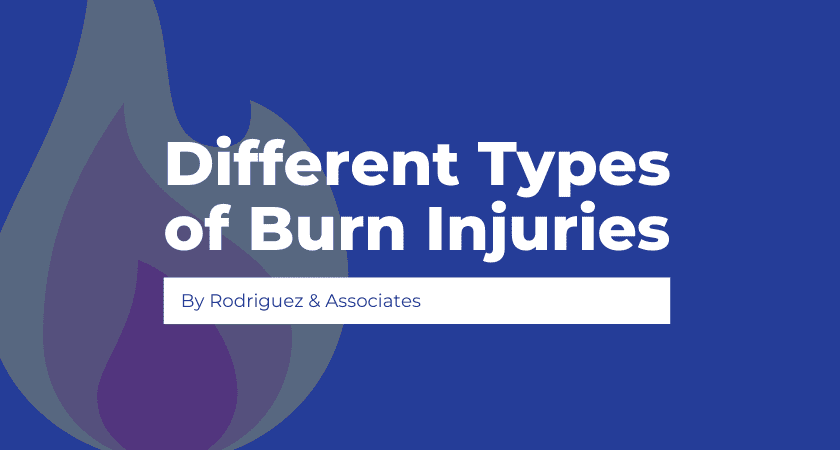Victims of fire or burn injuries can be left with debilitating injuries, physical and psychological scars and may face many years or surgeries and physical therapy to try to get back the life they once had.
There are many ways that people can be burned – from a property hazard, to a bonfire party, to faulty wiring or a workplace injury. While some of the burns are mild, others can be disfiguring. There are four types of burn injuries.
- Thermal burns are caused by contact with flames, hot water (or hot liquids), steam or other sources of intense heat. These are usually the source of household burns from kitchen fires and burns from auto accidents. Within thermal burns, there are:
- Flash burns – explosions of natural gas, propane, or other flammable liquids.
- Flame burns – due to exposure of prolonged, intense heat such as in a car accident or house fire.
- Scald burns – usually caused by hot liquids such as water, grease, oil, and tar.
- Contact burns – from coals, glass, hot metals or plastics.
- Chemical burns can be caused by contact with strong acids or alkali substances that may be found in some household cleaners such as bleach, drain cleaner, swimming pool chemicals, etc.,
- Electrical burns are common in the workplace, such as construction sites, restaurants, agricultural sites, and offices. These are caused by an AC or DC current.
- Radiation burns are caused by alpha, beta, or gamma radiation, commonly known as sunburns. X-rays and radiation therapy may also cause a burn, which could be a medical malpractice case.
Burn severity is categorized by medical professionals based on how deep the burn is and how they will approach treatment. Burns range from first-degree (mildest) to third-degree (most damaging).
- First-degree burns include only the outer layer of the skin (epidermis). Most are minor and superficial. A first-degree burn usually does not require treatment by a medical professional unless it covers a significant portion of the body. A first-degree burn injury can include:
- Redness
- Swelling
- Minor pain
- Texture changes when it starts to heal
- Second-degree burns involve the epidermis (outer layers of skin) and the upper layers of the tissue underneath (also known as the dermis). A small second-degree burn may heal on its own, however a larger second-degree burn may require medical treatment and skin grafting. An individual will usually experience:
- Blistering of the skin
- Higher degree of pain than first-degree burns
- Third-degree burns damage all layers of the skin – the outer layer epidermis and the dermis tissue below it – and may extend into subcutaneous tissues, ligaments, tendons, and bones (when this is the case, some physicians may classify this as a fourth-degree burn). Symptoms include:
- Charring
- Dark brown discoloration
- Waxy and white discoloration
- Leathery textured areas
- Undeveloped blistering areas
Our personal injury law firm in Bakersfield has represented many clients including those who have suffered burn injuries from workplace accidents, car accidents, truck accidents, and construction accidents. We not only care about the case, but we care about the well-being of our clients and will assist in obtaining medical care and day-to-day support following a serious burn injury.
And always, we will fight to hold the responsible party accountable and for fair compensation.
If you or a loved one has experienced a burn or electrical injury, contact us at (661) 777-7575 or toll-free (800) 585-9262 to schedule a no-charge consultation.





